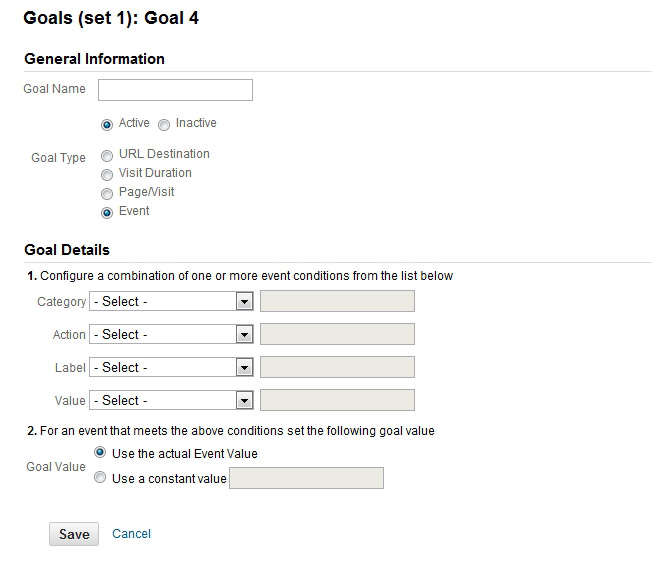Key Insights on What Data Is Google Analytics Goals Unable to Track
Key Insights on What Data Is Google Analytics Goals Unable to Track
Blog Article
Discover the Limitations of Google Analytics Goals: Revealing the Information Types That Remain Untrackable
As companies progressively depend on data-driven decision-making, comprehending the constraints of tools like Google Analytics becomes paramount. While Google Analytics Goals deal useful insights right into user interactions, there exist information types that elude monitoring, positioning obstacles to a thorough understanding of user behavior. These untrackable information kinds raise concerns about the precision and efficiency of the analytics data that companies greatly depend upon for their electronic techniques. Interested to uncover the concealed unseen areas in your data evaluation procedure?
Incomplete Customer Trip Tracking
Insufficient user journey tracking within Google Analytics can impede the capability to accurately analyze user behavior. When the user journey is not completely tracked, there are spaces in the information that protect against an extensive understanding of how customers connect with a website. This lack of insight can result in missed chances for optimization and improvements to the user experience.
One typical problem with incomplete customer trip monitoring is the failure to see the full path that users take before finishing an objective or leaving the site. Without this details, it is testing to identify where individuals might be experiencing obstacles or friction points that stop them from converting. Additionally, insufficient monitoring can obscure the effect of certain advertising initiatives or website adjustments on customer actions.
To address this constraint, it is vital to establish appropriate monitoring mechanisms within Google Analytics to capture the entire user journey. This might entail setting up event monitoring, goal funnels, or utilizing devices like Google Tag Supervisor to make sure that no crucial communications go unrecorded. By getting an extensive view of the individual journey, site owners can make even more informed decisions to enhance customer interaction and drive conversions.
Acknowledgment Difficulties
Navigating through attribution difficulties in Google Analytics calls for a comprehensive understanding of exactly how different touchpoints add to the total conversion procedure. Acknowledgment obstacles emerge from the complexity of contemporary customer journeys, where individuals communicate with numerous channels prior to converting.
One typical acknowledgment obstacle is the difficulty in connecting conversions to the correct source, particularly in instances where individuals engage with numerous channels prior to converting. This can result in inaccuracies in determining which advertising and marketing initiatives are driving one of the most conversions. Additionally, cross-device monitoring postures an additional attribution challenge, as individuals usually switch over in between devices during their trip, making it testing to track their interactions seamlessly. Marketers must carefully interpret and examine acknowledgment information to make educated decisions and enhance their advertising and marketing strategies properly.
Offline Conversions
Offered the difficulties connected with attributing conversions accurately in online networks, the measurement of offline conversions presents a significant possibility for marketing experts looking for a more extensive understanding of their consumers' trip. Offline conversions refer to actions that customers absorb the physical world, such as making purchases in brick-and-mortar stores or over the phone, attending events, or engaging with printed products - what data is google analytics goals unable to track. These conversions are vital for organizations that run both online and offline, as they supply useful understandings into the efficiency of advertising campaigns throughout various touchpoints
Tracking offline conversions typically posed a considerable obstacle for marketing professionals, as it was challenging to link these actions back to details on-line interactions properly. With innovations in technology, such as the combination of CRM systems, one-of-a-kind identifiers, and voucher codes, companies can currently link the void between online and offline information to get a much more alternative sight of customer behavior. By properly gauging offline conversions, marketing professionals can enhance their techniques, assign resources a lot more efficiently, and eventually improve the total client experience.
Cross-Device Tracking
Cross-device monitoring plays an important duty in comprehending the interconnected nature of customers' digital communications across several tools. In today's omnichannel world, where customers perfectly switch in between desktop computers, tablets, and smartphones, tracking their actions throughout these tools is essential for marketing experts to gain an extensive sight of their client journey.

Additionally, personal privacy worries and policies such as GDPR and CCPA have further complicated cross-device monitoring. With customers requiring even more control over their data and raised have a peek at these guys constraints on monitoring innovations, online marketers need to locate privacy-compliant and innovative methods to link user communications throughout tools.
Dynamic Content Involvement
Comprehending customer engagement with dynamic web content is essential in maximizing digital marketing approaches for boosted audience communication. Dynamic web content describes web site elements that alter based on individual actions, choices, or other variables, supplying a customized experience. Tracking customer interactions with dynamic material presents obstacles for typical analytics devices like Google Analytics.
While Google Analytics can track fundamental communications like clicks and web page views, it might battle to capture more nuanced engagements within dynamic content. what data is google analytics goals unable to track. Metrics such as time invested on details dynamic aspects, hover activities, or communications within pop-ups are commonly not easily measurable utilizing conventional tracking methods. This restriction impedes marketing professionals' ability to completely understand exactly how individuals are involving with vibrant web content and tailor their techniques as necessary

Verdict
Finally, Google Analytics goals have restrictions in tracking incomplete individual trips, attributing conversions precisely, catching offline conversions, tracking cross-device interactions, and measuring vibrant material engagement. These restraints highlight the relevance of discovering additional monitoring approaches and tools to obtain an extra comprehensive understanding of individual behavior and conversions past what Google Analytics can give.
While Google Analytics Goals offer beneficial insights into individual interactions, there exist data types that avoid monitoring, positioning difficulties to a detailed understanding of navigate to this website customer actions.Insufficient user trip tracking within Google Analytics can impede the ability to precisely analyze individual habits. When the customer trip is not fully tracked, there are gaps in the information that avoid a comprehensive understanding of how individuals interact with a website.One usual concern with insufficient individual trip tracking is the failure to see the complete path that users take previously completing an objective or leaving the site. By obtaining a thorough sight of the individual journey, web site owners can make even more enlightened choices to improve customer involvement and drive conversions.
Report this page